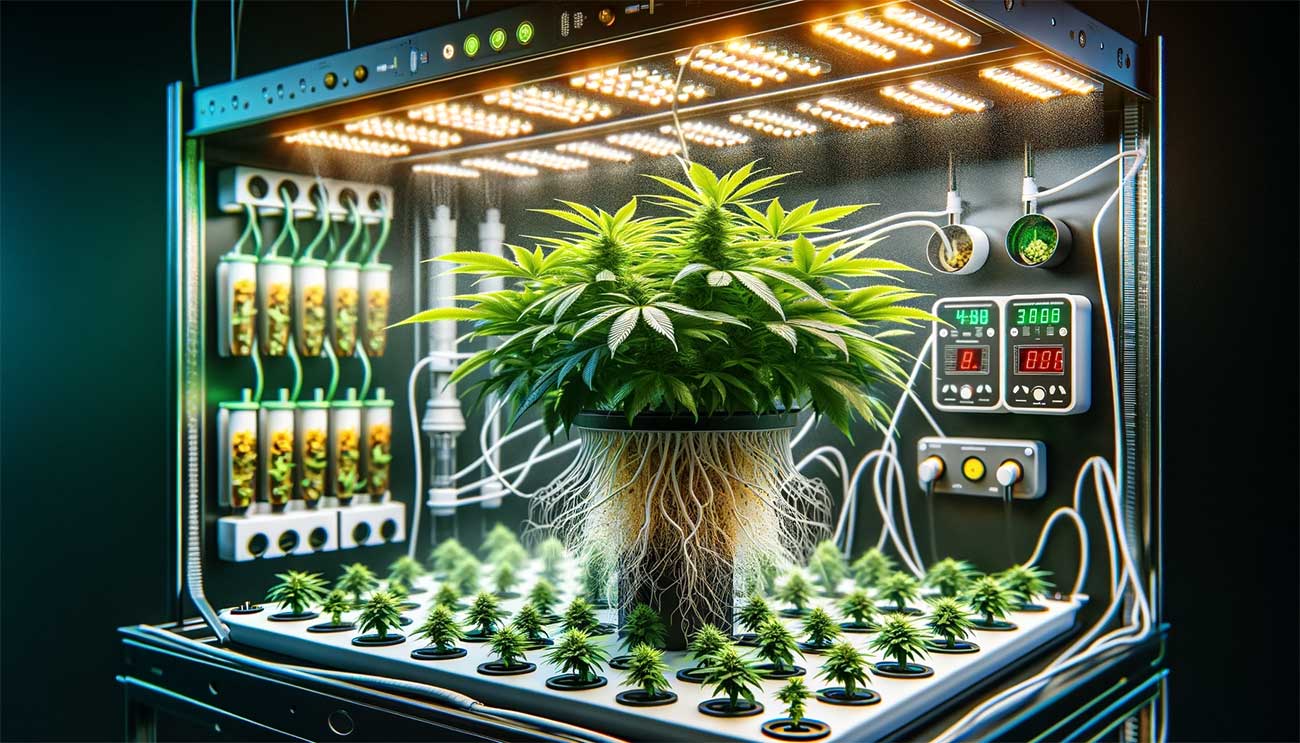Aeroponics is an innovative farming technique that grows plants in an air or mist environment without using soil or an aggregate medium. This method, originating from Greek words meaning labor and air, offers a distinct approach to growing food compared to traditional methods like hydroponics or aquaponics.
The Science Behind Aeroponics
At its core, aeroponics involves suspending plants in air while the roots are periodically misted with a nutrient-rich solution. This method allows plants to receive an optimal balance of oxygen, nutrients, and moisture, which can significantly enhance growth rates and yields.
Advancements in technology play a crucial role in aeroponic systems. Precision timers, pumps, and misting devices are crucial for delivering the nutrient solution in a fine mist, ensuring that the roots do not dry out and are efficiently absorbing the necessary nutrients.
The Advantages of Aeroponics
Enhanced Growth and Water Efficiency
Aeroponics is celebrated for its rapid plant growth due to increased oxygen exposure. Remarkably water-efficient, these closed-loop systems use about 95% less water than traditional soil-based agriculture. The nutrients, mixed in the water, get recycled, thereby reducing waste. This method is particularly beneficial for urban vertical farms, significantly reducing the environmental costs associated with traditional farming.
Space Efficiency and Mobility
This technology allows for substantial plant growth in confined spaces, making it viable in diverse environments, including urban areas and extreme climates. The vertical design of aeroponic systems maximizes the use of space. Furthermore, aeroponics offers mobility in managing plants, enabling easy movement without disrupting growth, which is crucial for maintaining different maturity levels in a limited space.
Challenges in Aeroponics
Technical Precision and Dependence on Power
Aeroponic systems require precise management of nutrient concentration and consistent operation of misting devices. Power outages or equipment malfunctions can rapidly damage the plants, as their exposed roots can quickly dry out. Additionally, these systems depend heavily on electrical power for water pumping and often require energy-intensive grow lights, posing environmental concerns. However, integrating alternative energy sources, like solar power, can mitigate these issues.
Cost and Equipment Considerations
While DIY aeroponic setups can be constructed for under $100, professional systems with automated nutrient monitoring and backup power are significantly more expensive. Aeroponics offers both horizontal and vertical system designs, with the latter being popular for space efficiency. Low-pressure systems are cheaper and simpler, suitable for DIY projects, whereas high-pressure systems, providing a finer mist, are more common in professional setups.
Aeroponics Market Growth and Key Players
- Market Growth: The Aeroponics market is poised for rapid growth, with an expected CAGR of 19.1% from 2023 to 2030.
- Key Global Players: Major players include AeroFarms, CombaGroup SA, and AERO Development Corp.
- Regional Insights: North America leads the market, while Asia Pacific is emerging as the fastest-growing region.
Aeroponics Methods and Their Efficiency
Different Approaches: Aeroponics systems can be low-pressure, high-pressure, or use ultrasonic foggers. Each method has its unique advantages, with the fogger approach, also known as “Fogponics,” creating very small water droplets for efficient nutrient delivery.
Plant Growth: Aeroponics enables continuous oxygen exposure to roots, promoting faster and healthier plant growth. This method can yield up to three times more than traditional soil-based systems and allows for year-round farming.
Maintenance and Space Efficiency
- Low Maintenance: The absence of a growing medium reduces maintenance needs, primarily involving disinfecting the root chamber and cleaning reservoirs and irrigation channels.
- Space Efficiency: Aeroponics systems are compact and can be set up in various geographic climates, even as remote as Antarctica.
Comparing Aeroponics with Traditional Farming
| Aspect | Aeroponics | Traditional Farming |
|---|---|---|
| Growing Medium | Air, with nutrient mist | Soil |
| Water Usage | Significantly less, more efficient | Higher, less efficient |
| Space Utilization | High (vertical farming possible) | Limited by land availability |
| Yield | Potentially higher, faster growth | Dependent on soil, climate conditions |
| Accessibility | Requires specific technology and knowledge | Widely practiced, traditional methods |
The Future of Aeroponics
Potential in Urban and Space Farming
Aeroponics holds immense potential for urban agriculture, providing fresh produce in densely populated areas. It’s also being explored for space missions, where traditional farming is impossible.
Challenges and Considerations
While promising, aeroponics faces challenges like technical complexity, initial setup costs, and the need for constant monitoring and maintenance. Overcoming these hurdles is crucial for its wider adoption and success.
Conclusion
Aeroponics, with its innovative approach to cultivation, represents a significant leap in agricultural technology. It offers a sustainable and efficient way to grow plants, especially in environments where traditional farming faces challenges. As we continue to develop and refine this technology, it holds the promise of revolutionizing how we grow our food and manage our natural resources.

